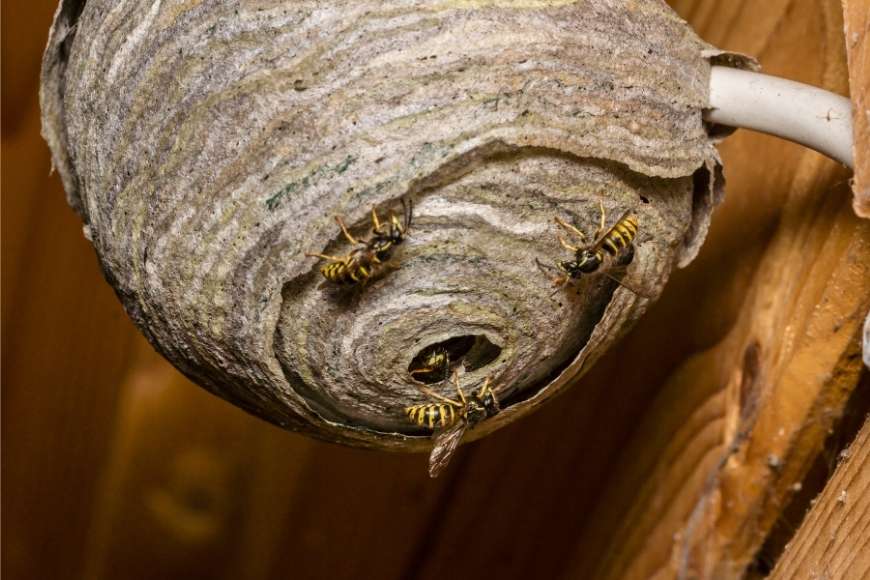Signs of a Wasp Nest and What You Should Do
As we enter the summer months, wasps become an increasingly unwanted pest problem in many properties and gardens around the UK. Dealing with these creatures without appropriate knowledge, experience, and specialist gear can be a dangerous task; therefore, we recommend leaving wasp nest removal to the professionals.

Common Signs of a Wasp Nest
It is common for wasps to build their nests underground, inside sheds, garages and lofts. Although, there have been reports of nests occupying unused rooms in properties and wardrobes. They usually enter buildings through small cracks and openings, searching for a food source, nesting site or shelter during the colder months. The earlier a wasp nest is identified, the easier it is to remove. Therefore, we have put together key signs of a wasp nest to ensure you can effectively identify the pest issue in a timely manner.
Wasp Sightings
As a wasp nest grows in size, so does the colony. If you have noticed a high volume of wasps in a particular area, it is likely an active nest is nearby.
Wasps usually have a repetitive flight pattern from an exit in their nest to a reoccurring food source. Therefore, if you remain vigilant and identify their flight path, you may be able to locate their nest. Although this is an important step to removing a wasp nest, it is essential you keep your distance as wasps will aggressively defend their home against perceived threats. This is particularly true during the summer months as temperatures rise and the nest becomes overcrowded, irritating the wasps and increasing the likelihood of them attacking with little provocation.
Buzzing
Wasps usually create a loud buzzing sound when building their nest. If you have noticed a regular buzz around your property, it is likely you have a pest problem. If you cannot locate the nest, regular and noisy buzzing could suggest it is hidden in rafters or an attic. As soon as you notice this noise, it is important to contact a professional pest exterminator to deal with the issue.
Nest Structures
Wasps build their nest from wood pulp, which gives it a distinguishable paper-like material. A nest is usually brown or dull grey in colour and often has several layers, the first with a noticeable swirl pattern. Their nests can also vary in size; between January and May, young nests are around the size of a golf ball or tennis ball. However, between June and July, a mature wasp nest can increase to the size of a football or rugby ball, housing thousands of wasps.
What Action Should you Take if you see Signs of a Wasp Nest
If you have noticed one or more of these signs of a wasp nest, but are concerned about locating the nest yourself, please contact Confirm a Kill for a complimentary inspection. We will visit your property and provide professional advice on the best approach to eradicate the pests and prevent future infestations.
If you do locate the nest, do not attempt to remove it yourself as disturbing the colony will anger the wasps, which can result in painful stings. If you are allergic to the venom wasps carry, these attacks can be life-threatening. Effective extermination requires specialist clothing and equipment; therefore, it is always wise to contact a professional.
At Confirm A Kill, we have over twenty-five years of experience in removing unwanted pests for both business and domestic customers. Therefore, if you want a guaranteed and affordable wasp nest removal, contact our experts.
